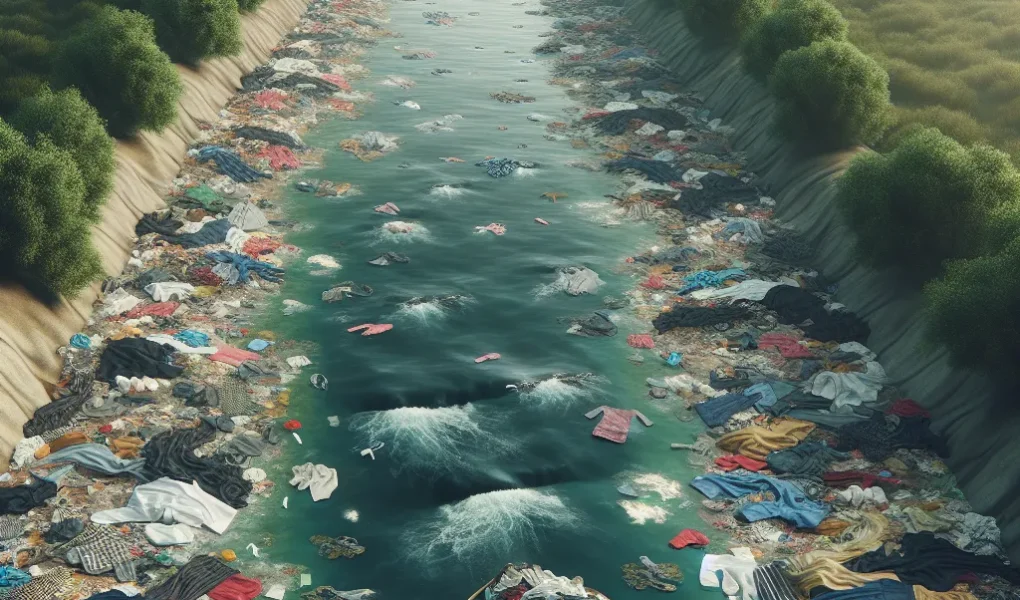The Environmental Toll of Fast Fashion: A Closer Look
The environmental toll of fast fashion is a pressing issue that demands our attention. The fashion industry’s rapid production of inexpensive, trendy clothing has led to detrimental effects on the environment. One of the key environmental impacts of fast fashion is the excessive use of natural resources, particularly water and energy. The production of textiles and garments requires large amounts of water for processes such as dyeing and finishing, leading to water pollution and scarcity in many regions. Additionally, the energy-intensive nature of manufacturing, transportation, and disposal processes contributes to greenhouse gas emissions and global warming.
Furthermore, the phenomenon of fast fashion has contributed to the rise of textile waste. With the increased pace of clothing production and consumption, the disposal of clothing has become a major challenge. Many garments end up in landfills, where they release harmful chemicals and take years to decompose. The use of synthetic fibers in fast fashion also poses a significant environmental threat, as these materials are not biodegradable and further contribute to the pollution of the environment.
It is evident that the environmental impact of fast fashion is significant and far-reaching. As consumers become more aware of these issues, there is a growing demand for sustainable and eco-friendly fashion alternatives. This shift towards environmentally conscious practices in the fashion industry is crucial for mitigating the harmful effects of fast fashion on the planet.
The Dark Side of Our Wardrobes: Fast Fashion’s Ecological Footprint
Fast fashion has revolutionized the clothing industry, offering consumers trendy and affordable clothing at a rapid pace. However, this convenience comes with a significant environmental cost. The proliferation of fast fashion has led to an alarming increase in the industry’s ecological footprint, contributing to issues such as excessive water usage, chemical pollution, and textile waste.
One of the most pressing concerns is the excessive water usage associated with fast fashion. The production of garments often requires vast quantities of water, from cultivating raw materials to the dyeing and finishing processes. This has led to water scarcity in various regions, particularly in countries where the majority of fast fashion production takes place.
Furthermore, the widespread use of toxic chemicals in textile manufacturing has resulted in severe pollution of water sources and soil degradation. The discharge of hazardous substances poses a threat to ecosystems and human health, particularly in developing countries with lax environmental regulations.
In addition to water usage and chemical pollution, fast fashion has also accelerated the generation of textile waste. The industry’s relentless focus on rapid production and consumption has led to a “throwaway” culture, where clothing is discarded after minimal use. This has resulted in overflowing landfills and incineration of vast quantities of textile waste, further exacerbating environmental degradation.
As consumers become increasingly aware of the dark side of fast fashion, there is a growing demand for sustainable and ethical alternatives. Brands that prioritize environmental responsibility and transparent supply chains are gaining traction, signaling a potential shift towards a more sustainable fashion industry. However, addressing the ecological footprint of fast fashion requires concerted efforts from both industry stakeholders and consumers to drive meaningful change.
The Fast Fashion Industry and Its Devastating Effect on the Planet
Fast fashion has revolutionized the clothing industry, providing consumers with trendy and affordable clothing options at an unprecedented pace. However, the rapid production and consumption cycles of fast fashion have taken a significant toll on the environment. The fast fashion industry’s relentless pursuit of quick turnover and low costs has led to devastating effects on the planet.
One of the most concerning aspects of the fast fashion industry is its enormous contribution to pollution. The manufacturing processes involved in producing fast fashion items often rely on hazardous chemicals and dyes, leading to water and soil contamination. Additionally, the overproduction of clothing results in large amounts of textile waste, further exacerbating environmental pollution.
Furthermore, the fast fashion model promotes a disposable consumer mindset, encouraging people to frequently discard clothing items in favor of newer, trendier pieces. This unsustainable pattern of overconsumption leads to an alarming increase in textile waste, as most of these discarded items end up in landfills, where they contribute to greenhouse gas emissions and take years to decompose.
Another significant environmental concern related to fast fashion is the heavy reliance on natural resources, particularly water. The production of materials such as cotton, a staple in fast fashion, requires substantial water usage, contributing to water scarcity in numerous regions where these resources are cultivated.
In conclusion, the fast fashion industry’s relentless focus on rapid production and consumption has led to catastrophic consequences for the environment. From pollution and waste generation to the unsustainable use of natural resources, the devastating effects of fast fashion on the planet cannot be overlooked. It is imperative for the industry and consumers alike to actively seek and support sustainable and eco-friendly alternatives to mitigate these environmental impacts.
Uncovering the Environmental Consequences of Fast Fashion
Uncovering the environmental consequences of fast fashion has become a critical focal point in discussions surrounding the fashion industry’s impact on the environment. The rapid pace of fast fashion, characterized by quick production cycles and low-cost, disposable garments, has led to a myriad of environmental issues.
One of the most significant environmental impacts of fast fashion is related to its high carbon footprint. The production of fast fashion items often involves the use of fossil fuels for energy, contributing to greenhouse gas emissions and global warming. Additionally, the transportation of these goods from manufacturing facilities to retail outlets and ultimately to consumers results in further carbon emissions.
Furthermore, the widespread adoption of synthetic fibers in fast fashion has led to issues related to microplastic pollution. When these synthetic garments are washed, they release tiny plastic particles that end up in the oceans, negatively impacting marine life and entering the food chain.
Another pressing concern is the massive amount of textile waste generated by the fast fashion industry. With the rapid turnover of trends and styles, clothing is frequently disposed of, leading to overflowing landfills and increasing pressure on waste management systems. Moreover, the production of textiles requires significant amounts of water and chemicals, further straining natural resources and contributing to pollution.
As consumers become more aware of these environmental consequences, there is a growing call for sustainable and ethical practices within the fashion industry. Brands are increasingly expected to take responsibility for the entire lifecycle of their products, from sourcing materials to end-of-life disposal. By addressing these issues, the fashion industry can work towards mitigating the environmental impact of fast fashion and promoting a more sustainable future.
Sustainability in Fashion: Navigating Away from Fast Fashion’s Impact
In recent years, the fashion industry has come under increasing scrutiny for its environmental impact, with particular focus on the phenomenon of fast fashion. Fast fashion’s rapid production and consumption cycle contributes significantly to environmental degradation, including water pollution, increased carbon emissions, and textile waste. In response to these concerns, the concept of sustainability in fashion has emerged as a crucial consideration for brands and consumers alike.
Sustainability in fashion encompasses a range of practices aimed at reducing the industry’s environmental footprint and promoting ethical production methods. This includes the use of eco-friendly materials, such as organic cotton and recycled fabrics, as well as the implementation of sustainable manufacturing processes. Additionally, sustainable fashion involves a commitment to fair labor practices and the well-being of garment workers, addressing social and ethical issues within the industry.
As consumers become more aware of the environmental impact of fast fashion, there is a growing demand for transparency and accountability from fashion brands. This has led to a rise in the popularity of sustainable and ethical fashion labels that prioritize environmentally conscious principles. Furthermore, initiatives promoting clothing rental, upcycling, and second-hand shopping have gained traction, offering alternatives to the traditional fast fashion model.
While navigating away from the negative impact of fast fashion on the environment presents challenges, the fashion industry is increasingly recognizing the importance of embracing sustainable practices. By prioritizing sustainability in fashion, brands can contribute to the preservation of the environment and work towards a more responsible and ethical future for the industry.



